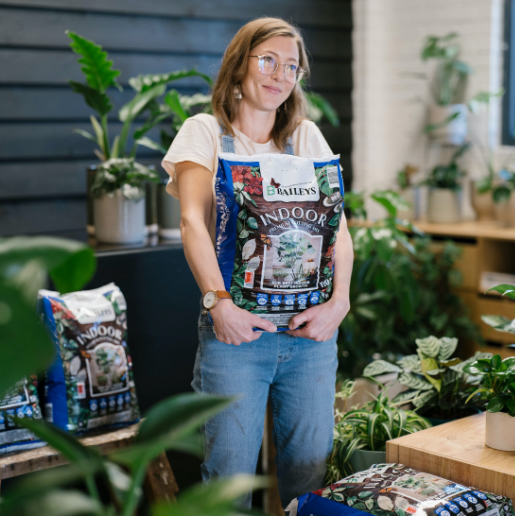
Join our Great Gardens Club!
Sign up to enjoy 15% off your first purchase from Baileys online. Plus, get our monthly WA gardening tips, latest news and promotions straight to your inbox.

Sign up to enjoy 15% off your first purchase from Baileys online. Plus, get our monthly WA gardening tips, latest news and promotions straight to your inbox.
With origins in the northern parts of South America, chillies are well suited to summer conditions in Perth.
The fruits seem to have found a place in just about every cuisine and there are thousands of varieties from which to choose, all belonging to the capsicum genus. They're members of the solanaceae family, along with cousins potatoes, eggplants and tomatoes.
There are a small number of staple varieties that are easy to find and these can get you started on the chilli odyssey, if this is where you are heading. The heat varies from sweet nothing through to incendiary. All chillies are edible, even Purple Explosion, which is normally grown as an ornamental variety.
Chillies are short-lived perennials in subtropical and tropical areas but are normally grown as annuals in colder regions. Growth and fruiting slows down in winter to the point where some cold-sensitive varieties can die. In Perth, it is possible to keep all varieties for more than a year, with careful treatment of the more sensitive types. Nurse them through by putting in a warm, sheltered spot and protect from the elements. Often it's best to start again in the new season, in spring, with new plants.
Location
Most chillies grow best in slightly limey soil; however, they are very tolerant of different soil types. Chillies like a warm, sunny spot, well-drained soil and regular watering during dry weather.
The best time to germinate seeds is in late spring around October or even November. Plant out seedlings from November on.
Planting
If growing in pots or tubs, choose Baileys Veg & Herb Planting Mix. If you are planting in the garden then amend the soil with generous quantities of Baileys Clay & Compost (for sandy soils) or Soil Improver Plus. Add Baileys Clay & Compost to build up fertility and water holding capacity of sandy soils, about 1 bag per square metre.
While chillies like full sun it's a good idea to give then some protection through our blazing summers. Growing in pots is a great way to go and gives you the ability to move then throughout the seasons. Single plants are best in a 200 mm pot, and two or three can be grown in a 30 cm diameter tub. Baileys Veg & Herb Planting Mix is formulated for WA conditions and is my recommendation for growing all vegetables and herbs including chillies, it supplies all nutrients the plant will need for 6 months. If you're growing chillies in pots, simply replace the potting mix each time you replant.
Feeding & Maintenance
Mulching is vital through Summer, both for pots and garden beds. Add a 50-75 mm layer of Baileys Moisture Mulch to reduce evaporation and protect topsoil. Over fertilising can lead to excessive foliage and fewer fruit, just like with tomatoes. Feed with an organic-based fertiliser like Baileys Soil Matters Garden, a small handful once a month is perfect, water in immediately.
Harvest
Fruiting occurs after flowering and this normally starts in Nov/Dec through to April. Fruit form through the hot months of summer and the more you harvest the more fruit comes along to take their place. Most varieties present green fruit first, and then with further ripening change to their mature colour which can vary from green through, yellow, red, orange, purple, brown and black. Chillies can be picked at the green under-ripe stage right through to when they start to dry out on the plant.
Fruit colour is no measure of heat. The most reliable method is to try it and see. Should the heat be too much for you then rather than drinking water, which does nothing to quench the fire, look to milk, yoghurt, ice cream or vegetable oil. I have found that a raw sweet capsicum can also be a rescue package.
Did you know?
A Scoville heat unit measure has been developed to give some numbers to the hotness of chillies. On this scale sweet capsicum is zero and the Jalapeno comes in at about 3,500 to 8,000 units, which at first looks pretty impressive. I can manage to eat Habanero which rates as 100,000 to 350,000 units. To me a Habanero feels a bit like a punch in the mouth. I can't quite imagine getting the current world record holder onto my tongue. The Guinness Book of Records has bestowed the title on the Carolina Reaper, with a Scoville count of between 1,500,000 and 2,000,000 units. That's just plain scary!